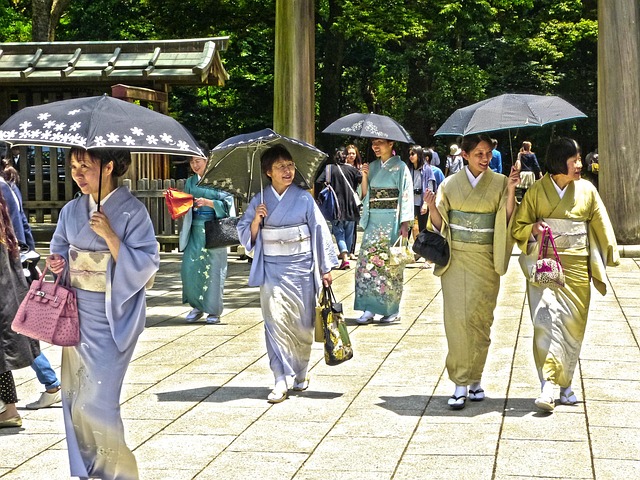Japanese clothing reflects a deep cultural heritage, blending tradition and modernity in every stitch. From the elegance of kimonos to vibrant street fashion, each style tells a unique story. Understanding these garments offers insight into Japan’s identity, expressing values, history, and innovation that continue to inspire worldwide fashion and culture today.
Essential Guide to Traditional and Modern Japanese Clothing
Understanding the spectrum of Japanese apparel means recognizing how deeply history and contemporary culture interweave. The landscape spans from ceremonial elegance to streetwear innovation, and Traditional Japanese clothings stand out for their enduring symbolism and craftsmanship.
In parallel : Unveil your style with our adult ghost spider costumes
Traditional Japanese attire such as kimono, yukata, and hakama feature time-honored structures and motifs. Kimonos, once daily-wear, are now donned for weddings or festivals, appreciated for their layered silk and detailed obi sashes. Widely recognized, yukata are lighter robes made from cotton, perfect for Japanese summers and festival celebrations. For men, hakama pleated skirt-like trousers are iconic for martial arts and formal events, contributing to Japan’s rich visual identity.
Pivoting to the present, modern Japanese streetwear and Harajuku fashion trends have defined global cool, blending elements from Western fashion with native influences. Oversized layers, experimental tailoring, and bold patterns express youthful individuality on Tokyo’s pavements while casual wear like minimalist shirts and relaxed trousers echo the practicality praised in traditional garb.
Topic to read : Elegant cross jewelry: a blend of faith and fashion
Finding authentic outfits can be effortless with specialized online shops. Platforms like KimuraKami allow overseas enthusiasts to access genuine pieces, ensuring a connection to Japan’s vibrant apparel history whether you’re dressing up for a cultural event or expressing your everyday style.
Cultural Significance and Regional Variations in Japanese Clothing
Symbolism and meaning behind iconic Japanese garments
Traditional Japanese clothing is steeped in cultural clothing significance. Each garment—from kimono to hakama pants—carries unique meaning shaped by centuries of ritual and daily life. Iconic pieces such as the kimono symbolize harmony, longevity, and cultural significance of colors in clothing. For instance, white represents purity in cultural dress for ceremonies, while vibrant reds or deep blues mark joyous or solemn events. Male traditional garments often favor subdued earth tones, reflecting respect and social status, versus female traditional garments, which feature nuanced patterns reflecting seasons and social roles. Japanese clothing materials also signal etiquette and occasion, with silk reserved for formal wear and cotton for comfort or casual use.
Seasonal fashion and traditional festival attire across Japan
Japanese seasonal fashion privileges both function and tradition. In summer, yukata and jinbei—crafted from breathable materials—are preferred for traditional Japanese festival apparel. During winter, padded haori and hanten emerge, demonstrating adaptive layering that reflects Japan’s climate. Festival outfit coordination is meticulously aligned with local customs, such as region-specific motifs or the choice of kimono accessories and layering. Attire for cultural festivals may favor historically-inspired obi belts and tying methods, or subtle adaptation for ease and movement.
Essential accessories: layering techniques, obi, geta, and more
Accessories animate Japanese clothing’s aesthetic and practical intent. Traditional footwear – geta and zori, each with its own history, complement both male traditional garments and female traditional garments. Seasonal layering, enabled by under-robing techniques and careful obi tying, is central to formalwear. Decorative touches—including obijime cords and obiage scarves—exemplify attention to detail, reinforcing both the cultural clothing significance and individuality celebrated in traditional formal wear.
Contemporary Trends and Shopping Japanese Fashion Worldwide
Popular Japanese streetwear brands and fashion subcultures
Modern Japanese streetwear stands out globally for its bold individuality and versatility. Leading Japan street fashion brands such as A Bathing Ape, Undercover, and Neighborhood influence both local and global markets. Harajuku fashion trends have shaped youth culture, blending color, layers, and creative self-expression. These brands frequently fuse urban flair with classic references, making Japanese casual men’s fashion and street styles recognizable even outside Japan. Women’s fashion trends in Japan adopt a playful yet sophisticated balance, while Japanese inspired modern dresses reinterpret traditional silhouettes for city living. The embrace of cosplay and anime-inspired outfits keeps youth fashion dynamic and ever-evolving.
Blending traditional garments with modern design elements
Designers increasingly combine traditional patterns and Japanese outerwear for winter with modern lines and technical materials. For example, kimono fabric may become the highlight of jackets or coats, aligning with typical Japanese clothing brands overview. Incorporating details from yukata or hakama into outerwear allows wearers to showcase their heritage with a fresh, modern twist.
Tips for purchasing, sizing, and caring for Japanese clothing in global markets
When buying second hand clothes in Japan or shopping from Japanese fashion online retailers, sizing can run small compared to Western standards; refer to measurement charts rather than generic sizing. Quality fabrics require careful washing; always check care instructions, especially with distinctive prints or layered garments. Asian streetwear trends and Japanese outerwear for winter often prioritize both style and function, so investing in versatile pieces is practical for various climates worldwide.





